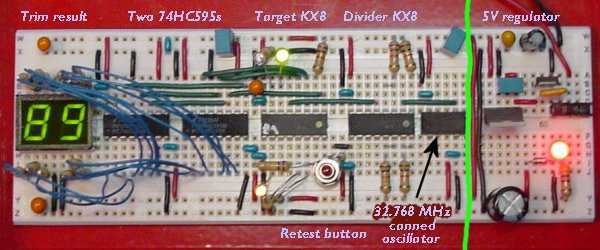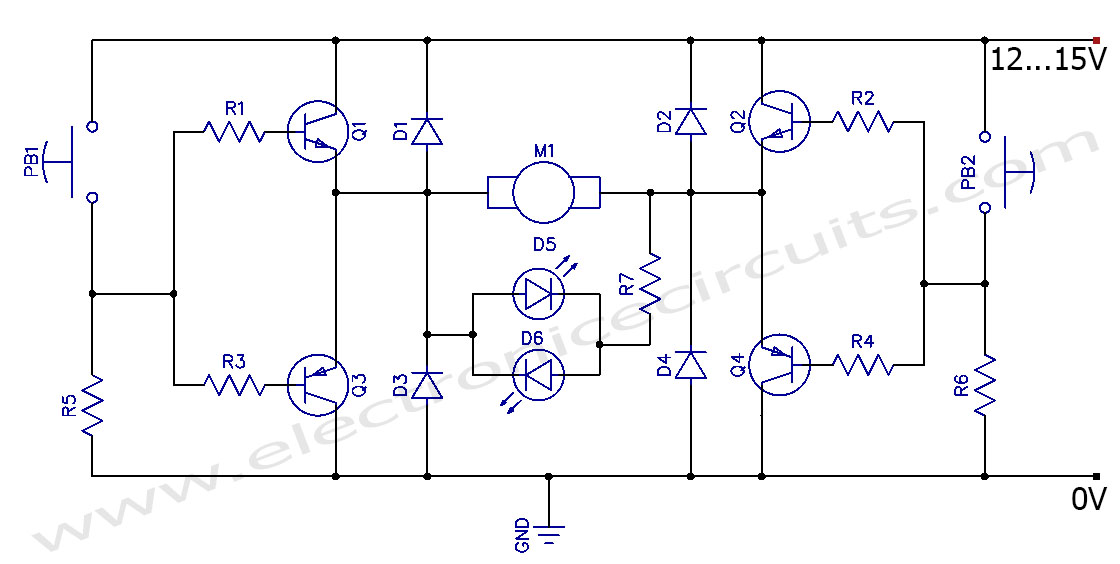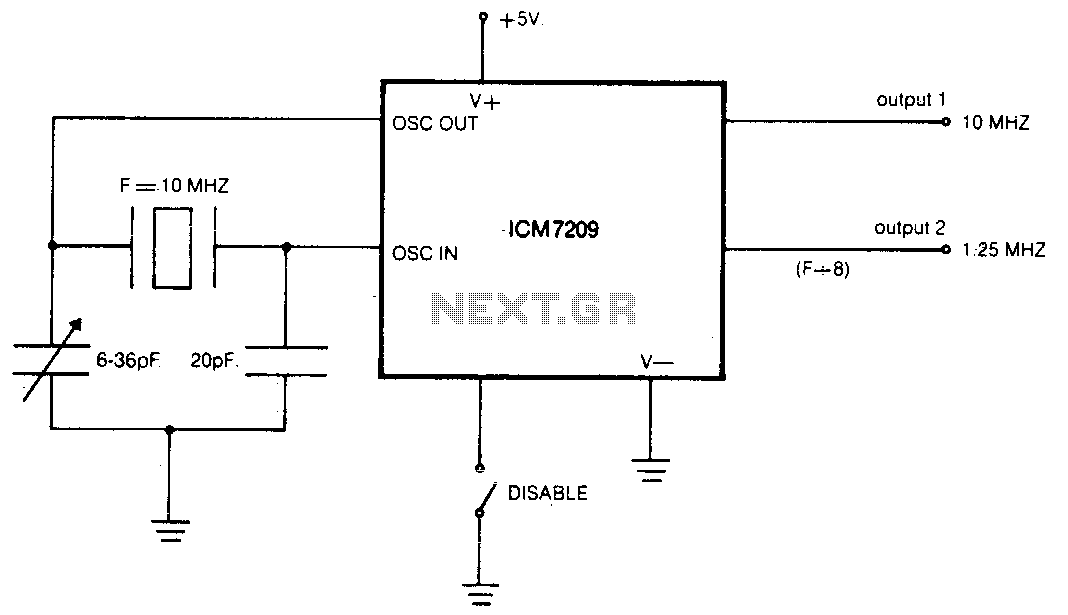
Thrifty 2Hz Clock

CMOS circuits are recognized for their low current consumption, which is especially significant for battery-powered applications. However, oscillators frequently face challenges related to...
CMOS (Complementary Metal-Oxide-Semiconductor) technology is widely utilized in the design of integrated circuits due to its advantageous characteristics, including low static power consumption and high noise immunity. In battery-operated devices, where energy efficiency is paramount, CMOS circuits provide an ideal solution by minimizing power draw during operation.
Oscillators, which are essential components in various electronic systems, generate periodic waveforms that are crucial for timing and signal generation. The design of CMOS oscillators, however, presents unique challenges. These include maintaining stable oscillation frequencies while ensuring low power consumption, which is vital for prolonging battery life in portable devices.
To address these challenges, various design techniques can be employed. For instance, utilizing a ring oscillator configuration can help achieve low power operation while maintaining frequency stability. Additionally, implementing feedback mechanisms within the oscillator circuit can enhance performance by compensating for variations in supply voltage and temperature.
Further, the choice of active devices, such as MOSFETs, and passive components, like resistors and capacitors, plays a critical role in determining the overall efficiency and functionality of the oscillator. Careful selection and optimization of these components can lead to significant improvements in both power consumption and output waveform quality.
In summary, CMOS technology offers numerous benefits for low-power applications, particularly in oscillator design. By leveraging innovative design strategies and component selection, the performance of CMOS oscillators can be optimized for use in battery-powered electronic devices, ensuring longevity and reliability in their operation.CMOS circuits are known for their low current consumption. This is particularly important for battery-powered circuits. Unfortunately, oscillators often r.. 🔗 External reference
CMOS (Complementary Metal-Oxide-Semiconductor) technology is widely utilized in the design of integrated circuits due to its advantageous characteristics, including low static power consumption and high noise immunity. In battery-operated devices, where energy efficiency is paramount, CMOS circuits provide an ideal solution by minimizing power draw during operation.
Oscillators, which are essential components in various electronic systems, generate periodic waveforms that are crucial for timing and signal generation. The design of CMOS oscillators, however, presents unique challenges. These include maintaining stable oscillation frequencies while ensuring low power consumption, which is vital for prolonging battery life in portable devices.
To address these challenges, various design techniques can be employed. For instance, utilizing a ring oscillator configuration can help achieve low power operation while maintaining frequency stability. Additionally, implementing feedback mechanisms within the oscillator circuit can enhance performance by compensating for variations in supply voltage and temperature.
Further, the choice of active devices, such as MOSFETs, and passive components, like resistors and capacitors, plays a critical role in determining the overall efficiency and functionality of the oscillator. Careful selection and optimization of these components can lead to significant improvements in both power consumption and output waveform quality.
In summary, CMOS technology offers numerous benefits for low-power applications, particularly in oscillator design. By leveraging innovative design strategies and component selection, the performance of CMOS oscillators can be optimized for use in battery-powered electronic devices, ensuring longevity and reliability in their operation.CMOS circuits are known for their low current consumption. This is particularly important for battery-powered circuits. Unfortunately, oscillators often r.. 🔗 External reference





